New York City moves fast, and locals have mastered the art of weaving through crowded streets with precision and purpose. But when tourists suddenly freeze in the middle of a busy sidewalk or block the subway stairs, the city’s rhythm gets disrupted.
These innocent mistakes might seem small, but they’re the quickest way to earn an eye roll from a true New Yorker rushing to catch the train or make it to work on time.
1. Stopping Dead at the Top of Subway Stairs
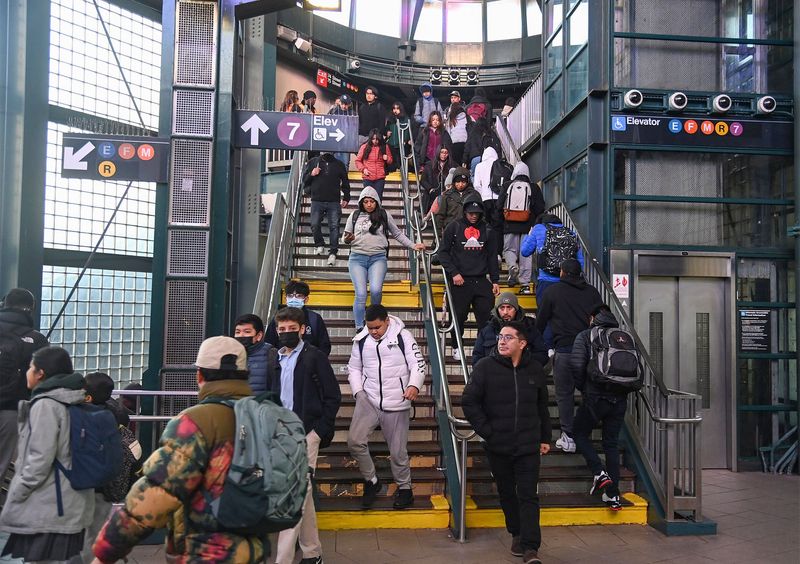
Picture this: you’ve just climbed a narrow subway staircase packed with dozens of people behind you, and suddenly the person ahead freezes right at the exit. Everyone behind them creates an instant traffic jam underground. This happens countless times every single day in New York, and it drives locals absolutely wild.
The subway stairs are like highway merge lanes. You need to keep moving once you reach the top to let everyone else flow through smoothly. Tourists often stop because they’re disoriented, checking their phones for directions, or simply taking in the sensory overload of street noise and city life.
Instead of blocking the flow, step to the side once you reach street level. Find a storefront, a building wall, or a less crowded spot to gather your thoughts and check your map. New Yorkers will silently thank you for keeping the city moving, and you’ll avoid becoming part of the problem that makes commuters late for important meetings or appointments every morning.
2. The Sidewalk Standstill for the Perfect Photo
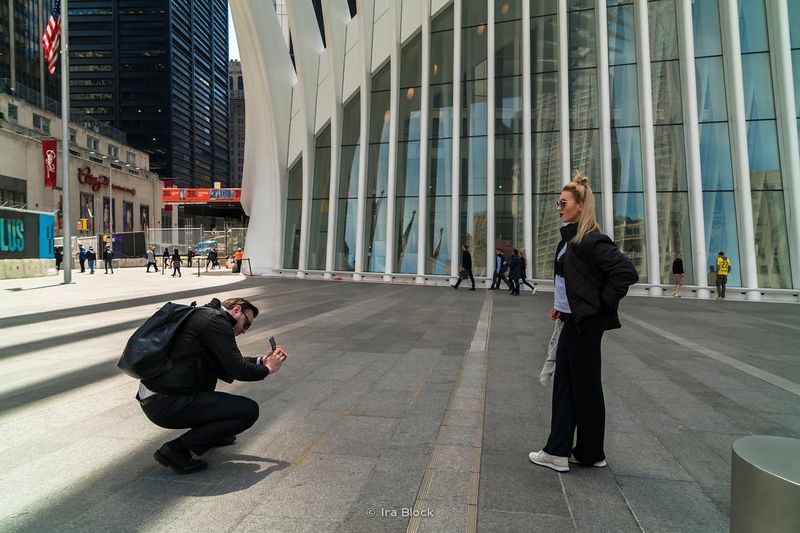
Nothing says tourist like planting yourself in the center of Fifth Avenue’s sidewalk to snap a dozen photos of a building or street sign. While capturing memories is part of any trip, doing it in the pedestrian fast lane creates chaos for everyone trying to get somewhere. Locals navigate these streets on autopilot, and sudden stops throw off their entire flow.
New York sidewalks operate like invisible highways with passing lanes and traffic patterns. When you stop without warning, you’re essentially slamming on the brakes in the middle of rush hour. People crash into you, stumble around you, or mutter under their breath as they dodge your camera.
Want better photos anyway? Move to the edge of the sidewalk, against a building, or into a doorway alcove. You’ll get clearer shots without people photobombing your frame, and you won’t interrupt the natural rhythm of city life.
Plus, you’ll have time to compose your picture properly instead of rushing while blocking an army of impatient commuters behind you.
3. The Mid-Crosswalk Map Consultation
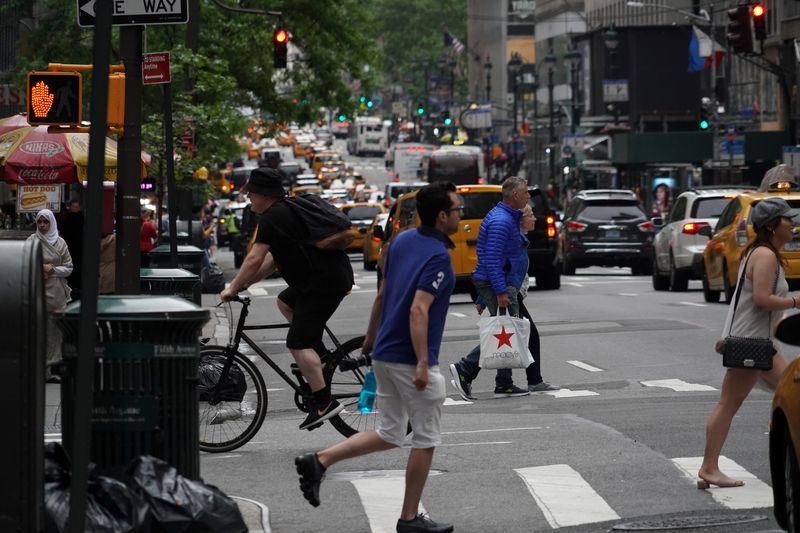
Crosswalks have one purpose: getting people safely from one side of the street to the other before the light changes. Yet tourists regularly treat them like study halls, stopping halfway across to debate which direction to head next or squinting at their phones while taxis honk impatiently. This habit ranks high on the list of things that make New Yorkers question humanity.
Traffic lights in New York don’t wait for anyone. When that walk signal starts flashing, you have mere seconds to clear the intersection before vehicles start moving again. Standing still puts you in danger and holds up both pedestrian and vehicle traffic in one of the busiest cities on Earth.
Before you step off the curb, know where you’re headed. Check your map while safely on the sidewalk, choose your direction, and then cross with purpose. If you get confused mid-crossing, keep walking to the other side and then find a safe spot to regroup.
Your safety matters more than perfect navigation, and you’ll avoid the glares of drivers and pedestrians alike.
4. Walking Four People Wide on Narrow Sidewalks
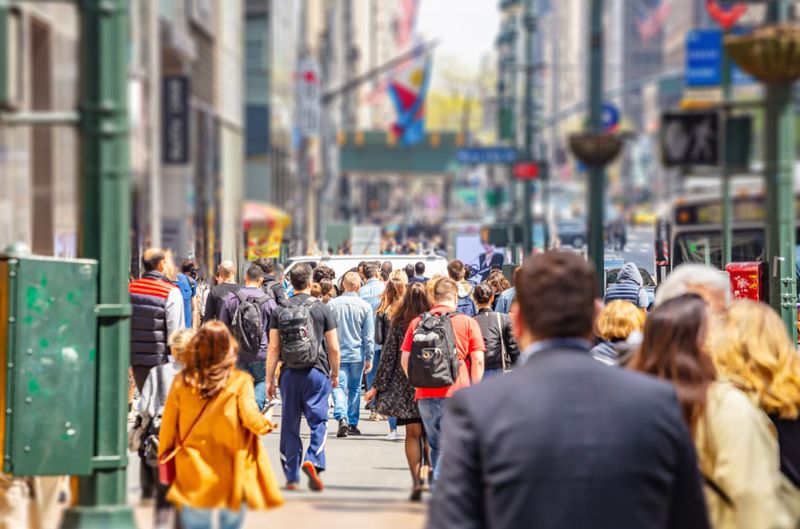
Exploring the city with friends or family makes any trip more memorable, but forming a human wall across the entire sidewalk turns you into a moving roadblock. New Yorkers master the art of single-file or two-by-two formation depending on sidewalk width, but tourist groups often stroll arm-in-arm like they’re walking through an empty park.
Many New York sidewalks are surprisingly narrow, especially in older neighborhoods like the West Village or Lower East Side. When your group takes up every inch of walking space, locals have nowhere to go except into the street or into you. Neither option makes anyone happy, and you’ll definitely notice the frustrated sighs.
Pay attention to sidewalk width and adjust your group formation accordingly. When paths narrow, naturally shift into pairs or single file to allow others to pass. If you need to chat as a group, pull over to a wider section or stand near a building entrance.
This small courtesy keeps foot traffic flowing and shows respect for the thousands of people trying to navigate their daily routines around your vacation adventures.
5. The Sudden Stop to Point at Buildings
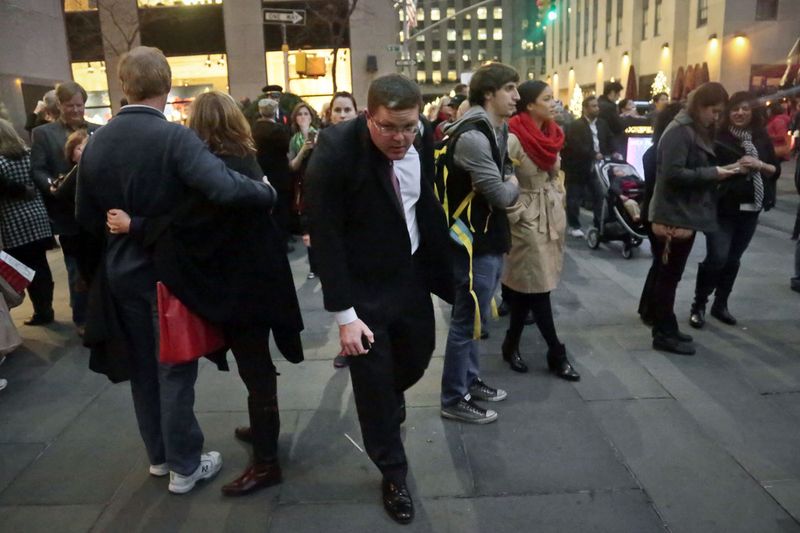
New York’s architecture deserves admiration. The Empire State Building, the Chrysler Building, and countless other structures inspire awe in visitors from around the world. However, stopping without warning to gaze upward or point excitedly at a skyscraper causes pedestrian pileups that locals find endlessly frustrating, especially during morning and evening rush hours.
When you walk in a crowded environment, people behind you expect you to maintain a steady pace. Sudden stops don’t give anyone time to react, leading to bumped shoulders, stepped-on heels, and occasionally colorful language. Your excitement is understandable, but the delivery needs adjustment to match your surroundings.
Admire the skyline from designated viewing areas, parks, or while standing safely out of the pedestrian flow. If something catches your eye unexpectedly, do a quick sidestep to the building edge before stopping and looking up.
You’ll actually enjoy the view more without dozens of people streaming past you, and you can take your time appreciating the architectural details that make New York’s buildings so special without becoming an obstacle course for busy locals.
6. Blocking the Bottom of Escalators and Stairs
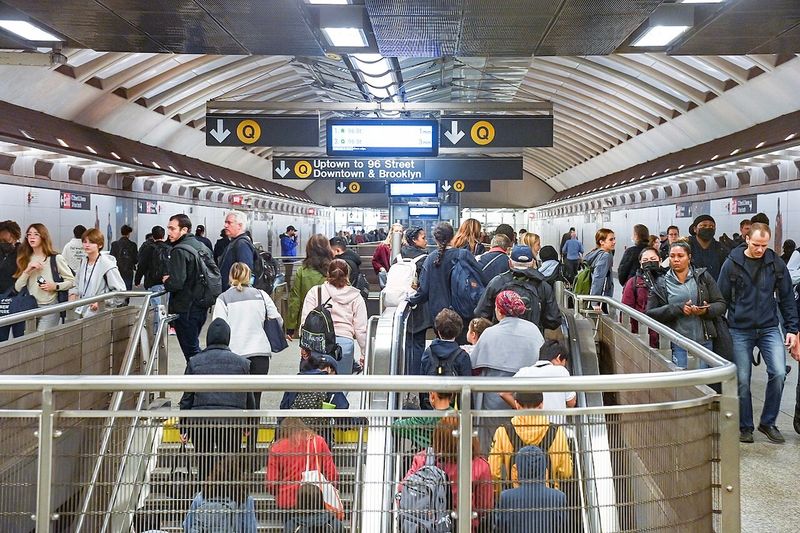
Just like the top of subway stairs, the bottom presents another critical bottleneck where tourists frequently pause to orient themselves. You step off an escalator or reach the bottom of stairs, and suddenly you’re in a new environment with multiple directions to choose from. The instinct to stop and assess makes sense, but it creates instant congestion for everyone still descending behind you.
Transit stations handle thousands of people per hour, and the flow depends on everyone keeping momentum through choke points. When you stop at the bottom, you force everyone behind you to halt, squeeze around you, or risk collision. During peak hours, this can back up dozens of people in seconds.
Train yourself to keep walking for at least five or six steps after reaching the bottom of any stairs or escalators. This simple habit clears the exit zone and gives you space to pause without blocking others. Look for platform signs, maps, or less crowded areas where you can safely stop and figure out your next move.
Locals will appreciate your awareness, and you’ll feel less rushed and pressured while making decisions about your route.
7. The Group Huddle in Doorways
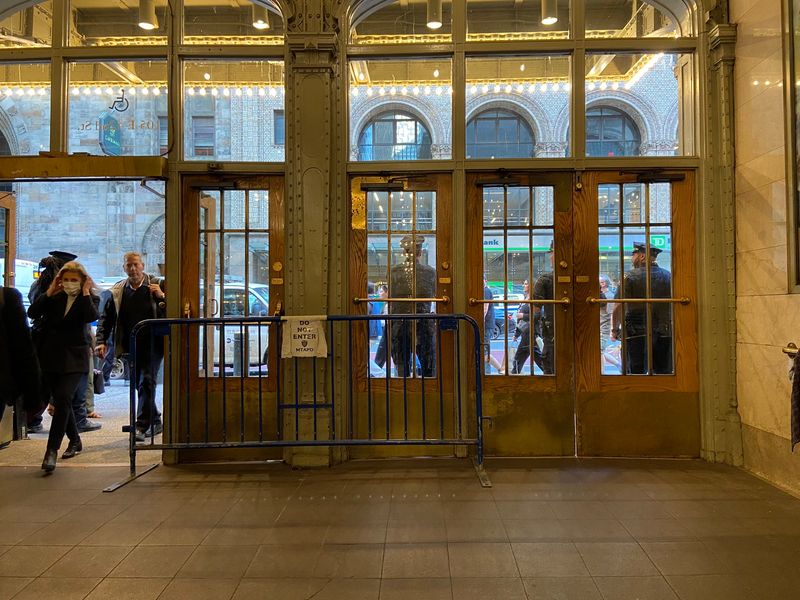
Doorways and building entrances seem like natural gathering spots when your group needs to regroup or make plans. Unfortunately, these locations are active zones where people constantly enter and exit, making them terrible places to hold a conference. Locals trying to access businesses or leave buildings find themselves trapped or forced to awkwardly squeeze through your circle.
Every doorway serves as a mini-highway with incoming and outgoing traffic. When you block this space, you create bottlenecks for customers, employees, and residents who have every right to use the entrance without navigating a human obstacle. The frustration doubles when you’re oblivious to people saying excuse me repeatedly behind you.
When your group needs to stop and talk, scan for actual empty space rather than defaulting to the nearest doorway. Look for building alcoves set back from the main entrance, spaces between storefronts, or wider sidewalk sections where you won’t block active pathways.
Even moving just ten feet away from a door makes a massive difference in how you impact foot traffic around you. Your group will have a better conversation without constant interruptions from people trying to get past you.
8. Stopping to Read Every Menu Outside Restaurants
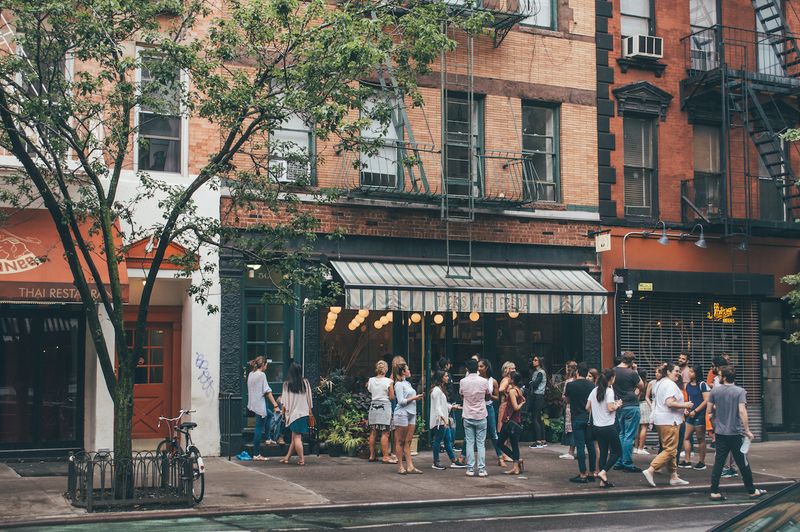
Restaurant hunting is part of the New York experience, and checking out posted menus helps you make informed dining choices. The problem arises when groups camp out in front of every restaurant, blocking the sidewalk while debating whether they want pizza or pasta. What feels like a quick decision to you becomes a lengthy obstacle for locals walking that same block.
New York’s restaurant density means you might pass twenty eating establishments on a single block. If you stop at each one to read the menu thoroughly, you’re essentially creating a series of roadblocks that force everyone else into the street or into awkward sidewalk shuffles around your group.
Narrow down your choices before you start walking, or do a quick walking scan of menus as you pass without stopping. If something catches your interest, step inside the restaurant’s vestibule or move well to the side before launching into a full menu analysis.
Many restaurants also post their menus online, so you can research options before you even leave your hotel. This approach saves you time, reduces decision fatigue, and keeps you from becoming a sidewalk speed bump for hungry locals heading home after long workdays.
9. The Abrupt About-Face Without Looking

Realizing you’re walking the wrong direction happens to everyone, locals included. The difference lies in execution. Tourists often spin around mid-stride without checking behind them first, creating near-collisions with whoever was walking in their wake. This sudden reversal breaks the unspoken rules of sidewalk traffic and occasionally results in actual crashes or spilled belongings.
Sidewalks have flow patterns just like roads, and people walk with certain expectations about the behavior of those around them. When you suddenly reverse direction without warning, you violate these expectations and force split-second reactions from people who had no reason to anticipate your move. The result ranges from startled jumps to actual physical contact.
If you realize you’re heading the wrong way, first move to the side of the sidewalk and pause. Look behind you to gauge the pedestrian traffic, then execute your turn when you have a clear gap. This takes an extra three seconds but prevents collisions and shows awareness of your surroundings.
Locals make directional mistakes too, but they’ve learned to do it without taking out innocent bystanders in the process.
10. Standing in Subway Doors During Rush Hour

Subway doors exist for boarding and exiting, not for scenic viewing or claiming prime real estate during your ride. Yet tourists frequently plant themselves directly in doorways, blocking the flow of passengers trying to get on and off at each stop. During rush hour, when trains are packed and every second counts, this behavior causes delays and earns serious dirty looks from commuters.
New Yorkers follow an unwritten rule: move into the center of the subway car to make room for others. Standing in the doorway when space exists inside the car shows either cluelessness or inconsideration. Either way, you’re making life harder for everyone trying to use the system efficiently, and you might even prevent people from making their stops.
When you board a subway car, walk all the way inside and find a spot away from the doors. If the car seems full, you’ll often find space in the middle where people naturally create breathing room. Only stand near doors if you’re exiting at the very next stop, and even then, position yourself to the side so others can squeeze past.
This courtesy helps trains run on time and prevents you from becoming the person everyone remembers as that tourist who made them late.
11. The Slow Diagonal Sidewalk Wander
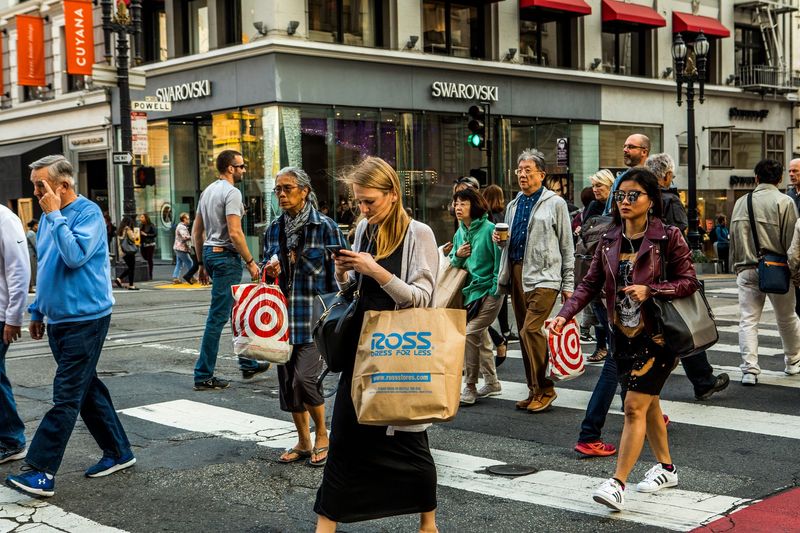
Walking while staring at your phone creates unpredictable movement patterns that drive New Yorkers crazy. You drift left, then right, then diagonal, moving at a snail’s pace while everyone behind you tries to predict which direction you’ll veer next. This sidewalk slalom forces faster walkers into constant course corrections, turning a simple commute into an exhausting obstacle course.
Locals walk with purpose and speed, often covering blocks in half the time tourists take. They can navigate around steady slow walkers by passing on the left, but erratic diagonal wanderers make passing nearly impossible. You block every potential path forward, creating frustration that builds with each zigzag step you take while absorbed in your device.
If you need to check your phone for directions or messages, stop walking first and move to the side. When you do walk, choose a straight line and maintain it, staying to the right to allow faster traffic to pass on your left. Think of yourself as the slow lane on a highway.
You have every right to walk at your own pace, but you need to hold a predictable path so others can safely get around you without playing guessing games about your next move.
12. Congregating at the Top of Tourist Attractions
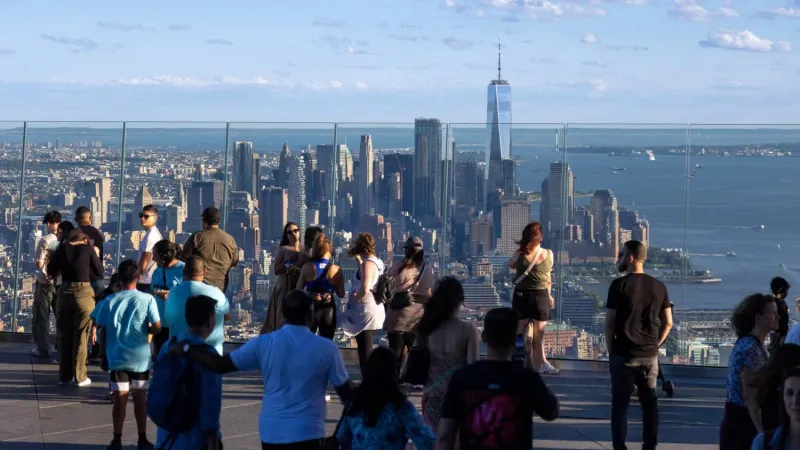
Observation decks, museum exits, and landmark entrances all share a common problem: tourists who reach these destinations and immediately stop moving, creating human traffic jams for everyone behind them. Whether you’re at the Top of the Rock or emerging from the Statue of Liberty ferry, that first moment of arrival isn’t the place to set up camp for photos and planning sessions.
These locations have controlled entry points that funnel large numbers of people into relatively small spaces. When the first people through stop immediately, everyone behind them has nowhere to go. The backup can extend down stairs, through hallways, or onto boats, affecting hundreds of people who just want to reach the same viewing area you’re blocking.
As soon as you reach any destination or exit point, keep walking forward for several steps to clear the pathway. Survey the area while moving, then choose a spot that’s away from the main traffic flow for your photos and group gatherings.
This awareness helps everyone enjoy the experience without feeling crushed or frustrated. You’ll get better photos with more space anyway, and you won’t spend your visit feeling rushed by the impatient crowd building up behind your group.
Dear Reader: This page may contain affiliate links which may earn a commission if you click through and make a purchase. Our independent journalism is not influenced by any advertiser or commercial initiative unless it is clearly marked as sponsored content. As travel products change, please be sure to reconfirm all details and stay up to date with current events to ensure a safe and successful trip.